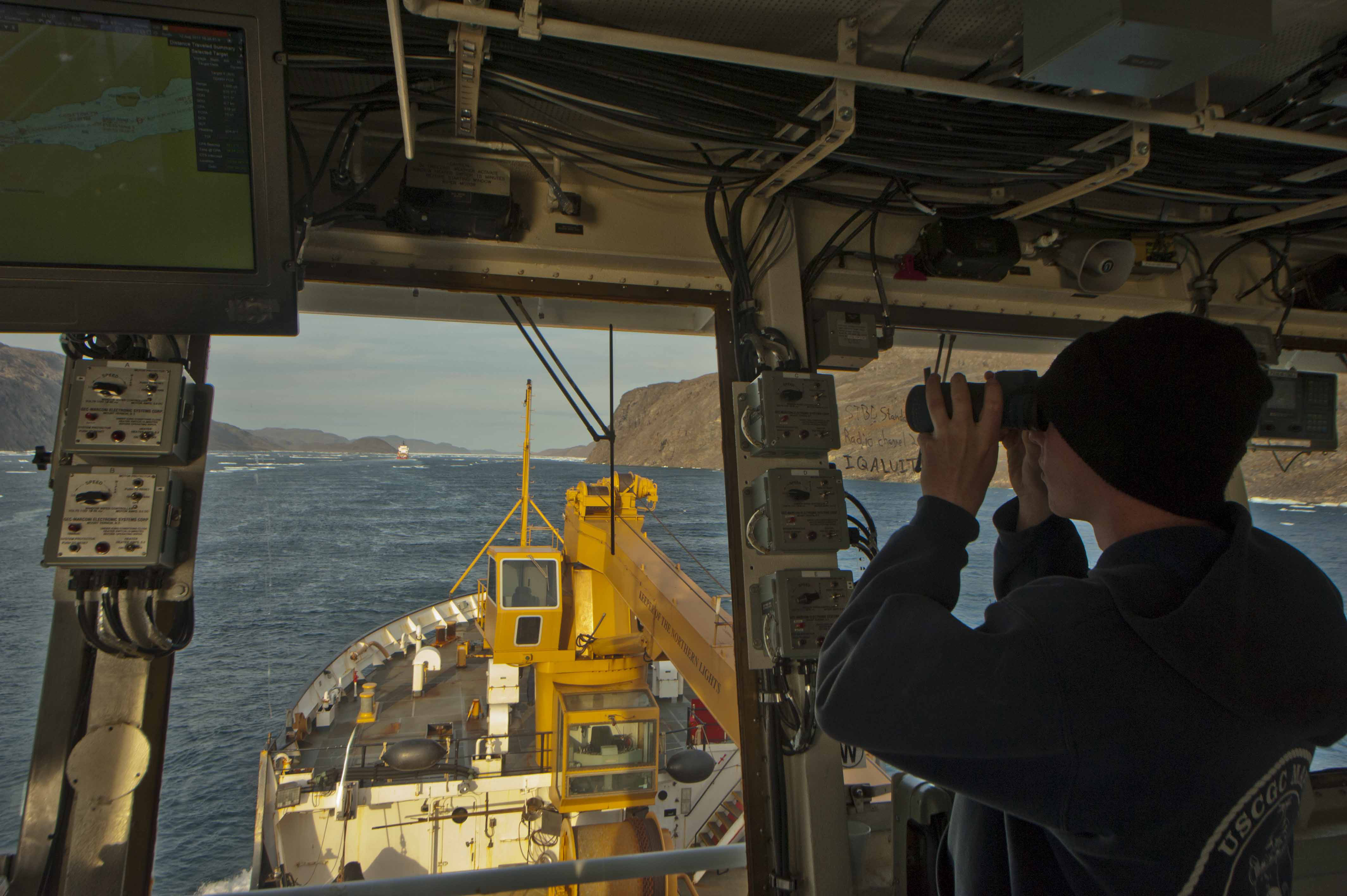How a new Inuit-run non-profit could help foster sustainable development of the Northwest Passage
The waterway’s Indigenous inhabitants need a bigger say in its future.

There are problems on the horizon for the Canadian Arctic and, to be more specific, the Northwest Passage. This fabled, once unpassable, waterway between the Pacific and Atlantic oceans is now becoming navigable a few months out of the year due to a sizeable reduction in sea ice. This development has meant that traffic in the region nearly tripled between 1990 and 2015 and is exacerbating two problems.
First, there is a significant gap in the necessary nautical charting in the Northwest Passage. In 2010, the Clipper Adventurer cruise ship struck an uncharted rock and ran aground. In 2012, the Vegas Sagittarius container ship struck a submerged rock by the entrance to Godthabsfjorden and ran aground. In 2018, the Akademik Ioffe research vessel struck a rock and ran aground. Due to the rise in traffic, such incidents are bound to increase. It is mere luck that the crashes to date have not resulted in a loss of life akin to the Titanic or damage to the environment to the tune of the Exxon Valdez oil spill.
Less than 28 percent of the Canadian Arctic is adequately charted, resulting in the utilization of maps that date back to the 1800s. The hydrographic surveying of that period is simply not adequate for modern standards and suggests that more crashes are imminent. Not only do these events come at sizeable cost, but they can take a significant toll on human life and the environment. The effects are multiplied in the remote areas, such as the Arctic. In 2010, the Arctic Regional Hydrographic Commission, under the International Hydrographic Organization, was formed to address these problems. While the U.S. and Canada are now working on solving charting issues specific to the Northwest Passage, resource constraints and a lack of prioritization, mean that an adequate solution is decades away.
Second, the Canadian Inuit, the population that has resided along the Northwest Passage for thousands of years, have not been adequately involved in the development of emerging routes. These people depend on the sea for their livelihood and are exceedingly concerned. When interviewed, multiple Indigenous leaders have stipulated that most of the concern is due to the perception that vessels trafficking the waterway are underprepared to respond to an emergency scenario. Not to mention that these communities are facing significant problems internally. Life expectancy for the Canadian Inuit is significantly lower than the rest of the country and the population suffers a staggeringly high suicide rate.
We ultimately have a choice. We can remain idle as marine traffic continues to increase, more detrimental crashes occur, and Indigenous communities remain voiceless. Or, we can get involved to promote a sustainable future.
My solution is to launch a not-for-profit entity, headquartered in Iqaluit, Nunavut, with the following objectives. First, construct and maintain an expansive information repository on the Northwest Passage to demystify the region for all parties. Second, maintain a response network along the route consisting of stations in Indigenous communities to offer a tracking service to maritime vessels, akin to the ‘flight following’ system in the airline industry. Third, ensure that the Northwest Passage’s Indigenous communities have representation in every forum that addresses the waterway to engage stakeholders consisting of nation-states, commercial shippers, and maritime insurers.
The most important aspect of the initiative would be the paid employees and volunteers that work by, with, and through Indigenous people in the stations along the route. These stations will be linked through radio and satellite communications. They will also be in close contact with response agencies, such as the Coast Guard. This solution will lower incident response time, where minutes matter, bring awareness, and offer a multitude of opportunities to the Inuit.
It is important to see this solution not as a catchall or final solution, but an incremental building block. There is precedent for such a waterway arrangement, as seen in the 2017 Bering Strait agreement between the U.S. and the Russian Federation. There will likely be strong support from multiple factions to include the indigenous people, maritime insurance providers, governments looking to remedy strained relations with their native populations, and international forums, such as the United Nations, that advocate for sustainable global development.
We simply cannot stand idle for decades, waiting on the completion of charting efforts and the installation of adequate infrastructure. We need to act now, invest in the Indigenous population, and work towards sustainable Northwest Passage development.
Nick Eidemiller recently completed his Master in Public Administration at the Harvard University John F. Kennedy School of Government. He is currently pursuing an MBA from The Wharton School at the University of Pennsylvania.

The views expressed here are the writer’s and are not necessarily endorsed by the Arctic Initiative or ArcticToday, which welcomes a broad range of viewpoints. To submit a piece for consideration, email commentary (at) arctictoday.com.